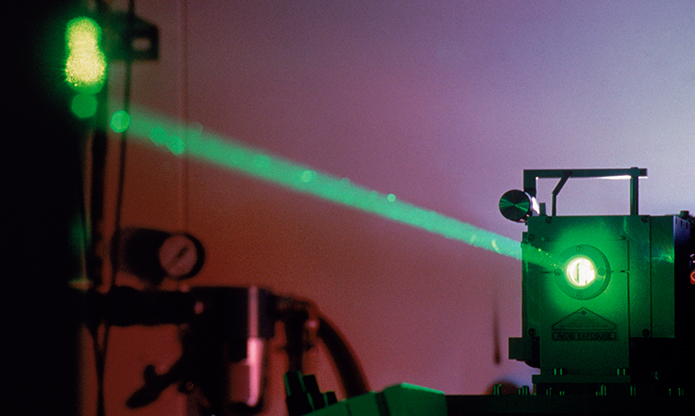Albert Schliesser has received a grant of DKK 15 million from the Novo Nordisk Foundation’s Interdisciplinary Synergy Programme for developing nanotechnology capable of analysing the structure and function of single proteins. The project is one of 16 grants the Foundation recently awarded through the Programme.
For many years, protein structure analysis has been the cornerstone of many research fields, from microbiology to medical research. The mapping of protein structures enables researchers to understand what happens inside the body at the microscopic level during illness and how to influence this with medicine.
Researchers have modern methods to analyse the structure of proteins when the sample contains millions of copies of a given protein. However, exploring proteins at the level of individual or few molecules has not been possible – until now.
Professor Albert Schliesser, Niels Bohr Institute, University of Copenhagen, is now seeking to change this with several colleagues through a new project that has received a grant of DKK 15 million from the Foundation’s Interdisciplinary Synergy Programme.
“We hope to develop a technological platform that provides insight into the structure of many rare proteins about which we know little today because only a few are inside cells. Some of these proteins might become promising drug targets or help us understand the molecular biological function of cells,” explains Albert Schliesser.
Developing two new methods
The technology Albert Schliesser and colleagues will develop is at the nanoscale and comprises two complementary methods.
The first method uses nanomembranes, which resemble miniature “drums”. The researchers can attach individual proteins to the nanomembranes, which alters their vibration frequency just as a drum changes sound when you place something on the drumhead.
The method is sensitive to the protein’s mass and, based on the frequency of the membrane, can identify the mass distribution in the protein and thereby provide information about the protein’s size and shape.
The second method uses laser spectroscopy. Here the researchers will aim the laser at individual proteins and obtain information about their composite building blocks.
Using standard methods where proteins are irradiated with light, researchers can get insights into the structure of the proteins based on the spectrum of the light absorbed by the proteins. However, this is not possible for individual proteins, because the amount of light absorbed is insufficient for detection.
To overcome this limitation, Albert Schliesser and colleagues will observe how the frequency of nanomembranes with bound protein changes when irradiated with laser light of different wavelengths and use this information to create an absorption spectrum of the attached protein.
“The aim is to map how the protein is constructed of individual building blocks by examining this spectrum,” he says.
Interdisciplinary project across national borders
Albert Schliesser from the Niels Bohr Institute will collaborate with researchers from the Swiss Federal Institute of Technology (ETH Zurich), who are experts in nanosensing techniques and have a long tradition of studying nanostructures. Also participating are two groups of researchers from the Vienna University of Technology (TU Wien) who are experts in nanomechanics and nanomechanical sensors and chemistry and protein chemistry, respectively.
Albert Schliesser is an expert in quantum optics but views this project as his opportunity to contribute new technology to protein research.
“Our daily work focuses on the quantum aspects of various systems and how we can control this. This has led us to develop mechanical quantum oscillators, and this research project is now based on them. Just as the moon landings spawned all kinds of technology that could be used in various fields of research, we hope that our research can also spawn technology that can be used in research fields far from ours,” he explains.
Total of 16 grants
In addition to the grant to Albert Schliesser, the Foundation has awarded 15 additional grants within the Interdisciplinary Synergy Programme and the Exploratory Interdisciplinary Synergy Programme.
The Foundation has awarded DKK 74,497,427 to five projects within the Interdisciplinary Synergy Programme. Read about the grant recipients and their projects here.
In addition, DKK 53,975,837 has been awarded to 11 projects within the Exploratory Interdisciplinary Synergy Programme. Read about the grant recipients and their projects here.
The Programmes aim to support interdisciplinary, high-risk and high-gain projects at various stages. In many of the projects, researchers in Denmark will join forces with researchers from other countries to build bridges across national borders and professional fields to achieve the combined expertise that complex problems require.









